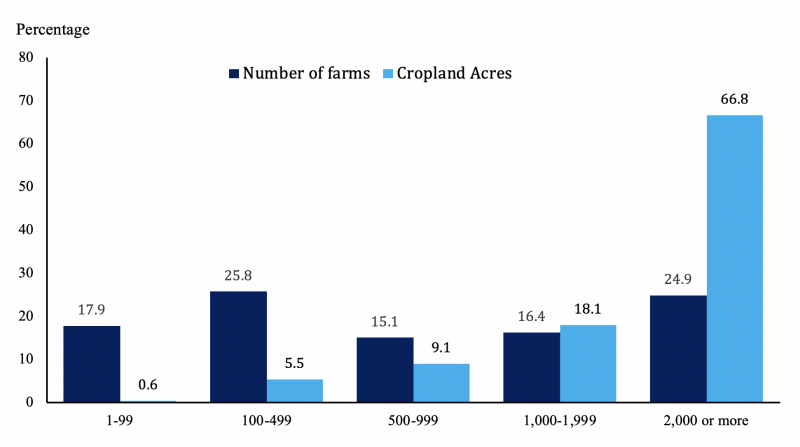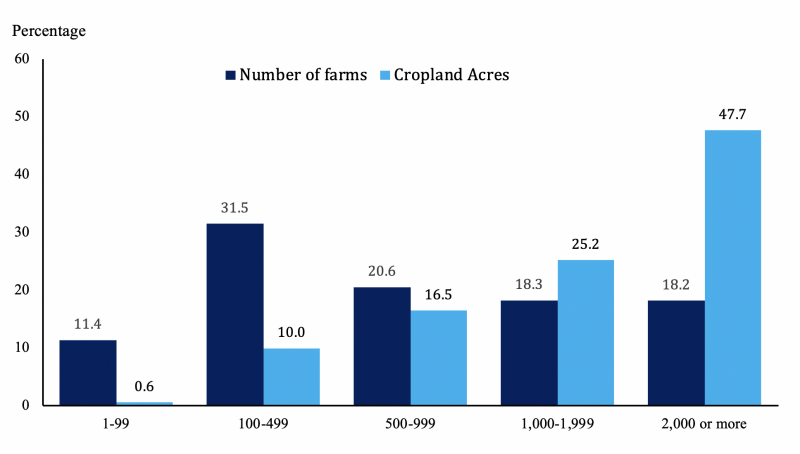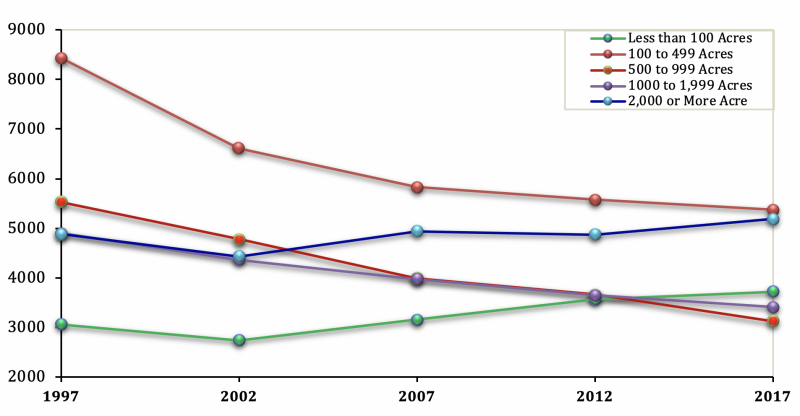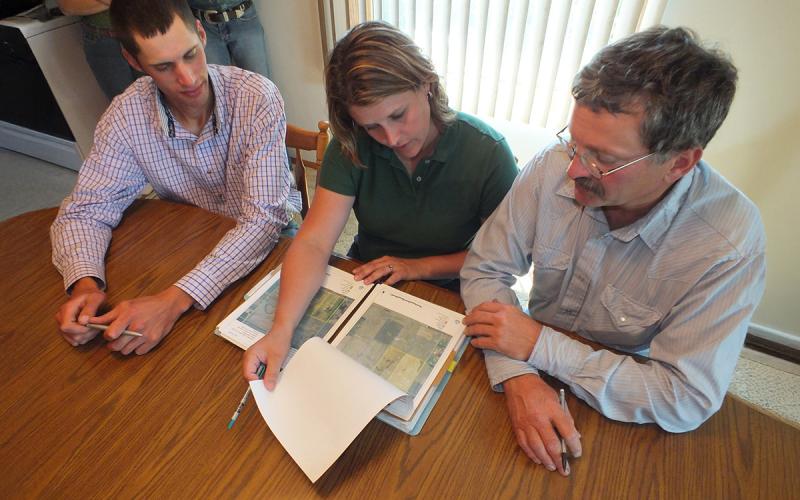Written collaboratively by Tong Wang and Iftekhar Uddin Ahmed Chowdhury.
Large farms play a more dominant role in South Dakota (S.D.) crop production, according to the recently released 2017 U.S. Census of Agriculture (NASS, 2017).
Large Farms
As of 2017, large farms of more than 2,000 acres operate 66.8% of South Dakota total cropland aces, in comparison to 47.7% as of 1997 (Figure 1, Figure 2). Even though the total number of S.D. crop operations continues to decline, large crop operations with more than 2,000 acres nevertheless increases in number over the years, from 4,879 as of 1997 to 5,187 as of 2017 (Figure 3).
Labor saving innovations have facilitated the shift into larger cropland operations (MacDonald et al., 2013). Similar to other farm decisions, farm structure evolves as a result of the pursuit of greater profit margins. The increasing number of large-sized farms implies that larger farms are likely more profitable due to the scale effect.


Small Farms
In addition to large crop operations, small crop farms of less than 100 acres also experienced a similar increase in terms of number of operations (Figure 1, Figure 2). As of 2017, small farms with less than 100 acres made up 17.9% of the total number of cropping farms, in contrast to 11.4% as of 1997. Many small crop farms can find a niche in local markets and contributes to the local food production. Despite the increase in number, total cropland acres operated by small farms remain low over the years, only accounting for 0.6% of the S.D. cropland in both 1997 and 2017.
Medium-Size Farms
In contrast to the growing number of small and large crop operations, the number of medium-sized crop operations have been declining over the years (Figure 3), which contribute to the continuous drop in overall farm numbers (Figure 4). Based on the 2017 U.S. Census of Agriculture, the total number of S.D. crop operations decreased by 22.3% over the past 20 years.

Cropland Acres
During the 2002-2012 period, total S.D. cropland acres increased remarkably and reached its peak in 2012 (Figure 4), as a result of rapid grassland to cropland conversion during a period of higher crop commodity prices (Wang et al., 2017). Large farms contributed to most of the cropland increase, as 5% of farms accounted for 76% of total converted cropland acres in east Dakotas (Wimberly et al., 2017). Due primarily to the reduced crop profit, total operated crop acres stabilized during the 2012-2017 period, reflecting the recently curtailed grassland to cropland conversion and a reversion of cropland to grassland (Wang et al., 2018).

The Bottom Line
As two thirds of S.D. cropland is being managed by the large farms, it indicates that the operators of large farms in S.D. make land use decisions on the majority of cropland and thus play a pivotal role in improving soil health and ecosystem functions of the S.D. cropland. Therefore, it is crucial to demonstrate and promote the economic benefits of conservation farming practices on large-scale farms to maintain the long-term resilience of S.D. soils.
References:
- MacDonald, James M., Korb, P., & Hoppe, Robert A. (2013). Farm Size and the Organization of U. S. Crop Farming. U.S. Department of Agriculture, Economic Research Service, EIB-152. August.
- U.S. Department of Agriculture, National Agricultural Statistics Service (NASS) (2017). 2017 Census of Agriculture.
- Wang, T., Ayesh, A., Hennessy, D., & Feng, H. (2018). Cropland Reflux: Trends In and Locations of Land Use Change in the Dakotas, 2007 to 2012 and 2012 to 2017 (No. 1354-2018-4564).


